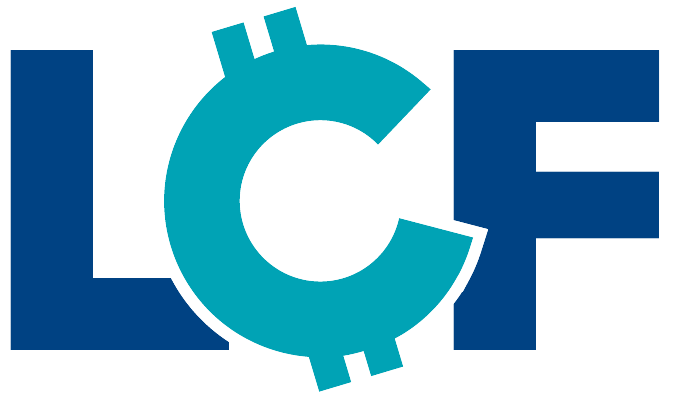Small Business Loans
Apply Now For Business Funding
*LCF presently limits its offerings to Sales Based Financing agreements and is in process of developing other small business funding options. By submitting this form, an applicant will be added to LCF’s waitlist for the applicable product. We may contact you now to discuss available Sales Based Financing options or refer an applicant to one of our partners presently offering this product.
Small Business Loans for 2024
Small business loans and similar financing options are specialized financing programs tailored for business entities. Within the small business financing sector, there are several loan options that address different business needs. These various types of business financing are designed toward various business needs and creditworthiness.
Small business owners should understand their funding options and compare them with their business needs. While this may seem obvious, business funding can get somewhat complex. Making the right decision could save thousands of dollars in fees and interest charges.
Assessing Business Financing Needs
When looking for additional capital for your business, the first steps are to define what you need the money for, how much additional capital you need, your ability to repay, and how long before you pay it back.
Once you have identified the need, the amount, the impact on cash flow (monthly payments you can afford), and repayment terms (short-term loan vs. long-term financing), you can then focus on the appropriate loan types, loan programs, or alternative financing.
Finding the best small business loans or business funding becomes more straightforward when you break the process down into logical steps.
Understanding Different Types of Business Loans and Business Funding Options
The term “business loan” is often broadly used to describe business financing. There is a big difference between a loan and alternative funding options for a small business. Not all business funding is classified as a “business loan.” The following are examples of financing options and business lending and how they work.
Small Business Loan
A conventional business loan is typically an arrangement where a borrower takes money (in a lump sum) from a financial institution, has a fixed or variable rate of interest on the amount borrowed for a defined period of time, and makes monthly payments over that fixed period of time until principal and interest is repaid to the lender.
This type of financing is usually associated with a traditional bank or credit union. A business loan, while used commonly to describe the business financing process, is not the most common method businesses use to raise capital. That is due to the difficulty in qualifying and eligibility requirements to get a conventional business loan. The truth is that most businesses simply do not qualify for this method of financing.
For many companies that are granted business loans, it often requires the business owner to have a good credit score, make a personal guarantee to ensure repayment of the loan, and often pledge personal assets as collateral in case of loan default.
Many business loans are considered general purpose loans, which simply means they can be used for any business purpose. This is also referred to as a working capital loan.
The loan application process often requires the borrower to provide:
business and personal tax returns for several years
bank statements for the business for several years
a business plan identifying how the money will be spent
A business loan application
a personal credit report
A personal guarantee by the business owner that they will be responsible for paying back the loan in the event the business defaults or cannot meet the payment obligations
A pledge of collateral (such as real estate or other business assets) in the event the loan defaults
Personal and/or business credit history
For entrepreneurs with excellent credit and collateral, a traditional business loan is one of the preferred means of accessing additional capital.
TIPS to Improve Your Chances of Getting Approved for a Business Loan
Do all your business and personal banking with the bank or financial institution where you intend to apply for a loan. Banks are more inclined to lend to people they have business relationships. This is especially true with credit unions.
Apply for a credit card from your financial institution, use it and pay off your balances promptly. Be sure not to spend up to your credit limit when using a bank card. Maxing out your credit cards (even if paid off promptly) are red flag of financial distress,
Apply for a business line of credit,
Ask your representative at your financial institution for advice on how to become eligible for a business loan. Bankers want to lend money, let them guide you,
Pay your bills on time, late payments can weigh heavily against you when applying for a business loan,
Be patient and plan ahead. Building an ideal business and personal credit profile can take time.
Small Business Administration (SBA) Loans
Businesses that have experienced consistent growth over a number of years and who’s owners have strong credit scores and credit histories may qualify for Small Business Administration (SBA) loans.
The U.S. Small Business Administration guarantees loans through participating banks and other financial institutions at low rates and highly favorable terms to qualifying businesses. The most popular SBA loan program is the SBA 7 loan.
The SBA loan programs are diverse and offer microloans to multi-million dollar loans that can be used for a variety of uses including refinancing of exiting loans to real estate acquisitions.
Business Line of Credit (BOL)
A business line of credit has some similarities to business credit cards. A BOL is an agreement with your financial institution to lend you money up to a preset limit that you can borrow when needed. For most smaller companies a BOL is a step towards building a strong business credit profile. Also, while given in smaller amounts, a BOL is considered easier to get than a conventional small business loan.
The BOL is like “ready cash” to be used when needed; unlike a traditional loan where the business owner takes cash in an upfront lump sum and begins repayment immediately on the full amount. So with a business line of credit you can draw loan amounts (up to your limit) in small increments and only pay interest and principle on the amounts borrowed.
Once established, BOL is a key financial asset and provides the business owner with a flexible way to access capital in times of need immediately. A BOL will usually have a low borrowing limit and can be an excellent way to build towards a stronger credit profile.
Applying for a business line of credit is considered a smart business finance strategy, even if it not needed immediately for working capital or other needs. Applying for a business line of credit when your company is financially strong will help you prepare for unexpected needs in the future. Often, the application process for a BOL is simpler and is often done online.
Merchant Cash Advance (MCA)
A merchant cash advance is not a business loan. An MCA is an arrangement with a provider who grants (or advances) a lump sum payment to a business owner in return for a percentage of future sales, plus financing fees. The business owner agrees to repay the advance over a pre-specified period for a fixed fee, usually expressed as Factor Rate. Merchant cash advances are generally given on a short-term basis (usually up to 12 months).
An MCA is often a financing option of last resort for businesses and is most common among retailers. MCA’s are suited for business owners who may have bad credit or limited credit histories; and therefore carry higher costs than most types of business financing. However, an MCA is also known as one of the most common types of business funding and has easier qualification requirements.
How an MCA Works
Merchant cash advance providers base their financing model upon the historical sales of a company. For example, if a company has averaged sales of $100,000 per month (annual revenue of $1.2 million) consistently for a year, the MCA provider may provide an advance of $50,000 with a factor rate of 1.2, and a repayment period of 6 months. The factor rate is generally expressed as a decimal, in this case “1.2.” In simplistic terms that means that the business would have to repay the advance amount ($50,000) times the Factor rate (1.2), or $60,000 over six months (plus any other fees agreed to by the parties).
In the example above, the merchant cash advance provider will automatically deduct approximately $10,000 per month from the business bank account or merchant account each month for six months. However, a typical repayment schedule may require the business or repay the advance daily or weekly, or on a fixed number of business days.
A merchant cash advance can be a financial lifeline for companies that cannot get business funding by more conventional means, but they are expensive and will reduce future cash flow. Additionally, since the fees for an MCA are fixed, there is no benefit for prepayment since prepaying the amount effectively will increase the annual percentage rate.
When to Use a Merchant Cash Advance?
As mentioned above, an MCA is among the costliest sources of business capital and should be a financing option of last resort. However, if a pressing business need or opportunity arises that requires fast cash, a merchant cash advance is generally the fastest way to acquire working capital. Also, MCA’s generally are unsecured loans requiring no credit check, personal guarantees or credit reports.
Equipment Financing
Equipment financing is one of the smartest ways to acquire needed equipment and keep acquisition costs down. This type of financing is usually offered directly through equipment manufacturers or specialized finance companies that work with manufacturers and equipment vendors.
In many cases, the equipment being acquired is used as collateral for the purchase or lease. In addition, this type of financing usually requires no down payment.
Latest Blog & Articles
Securing Business Funding with Bad Credit in 2024
Obtaining financing can be a pivotal step for small business owners looking to scale their ventures. However, for those...
Small Business Financing: Understanding Merchant Cash Advances
In the world of small business financing, there's a myriad of options available, each with its own set of...
Financial Tips for the Trucking and Transportation Industry
The trucking and transportation industry is the backbone of commerce, ensuring goods are moved efficiently across regions. For small...




